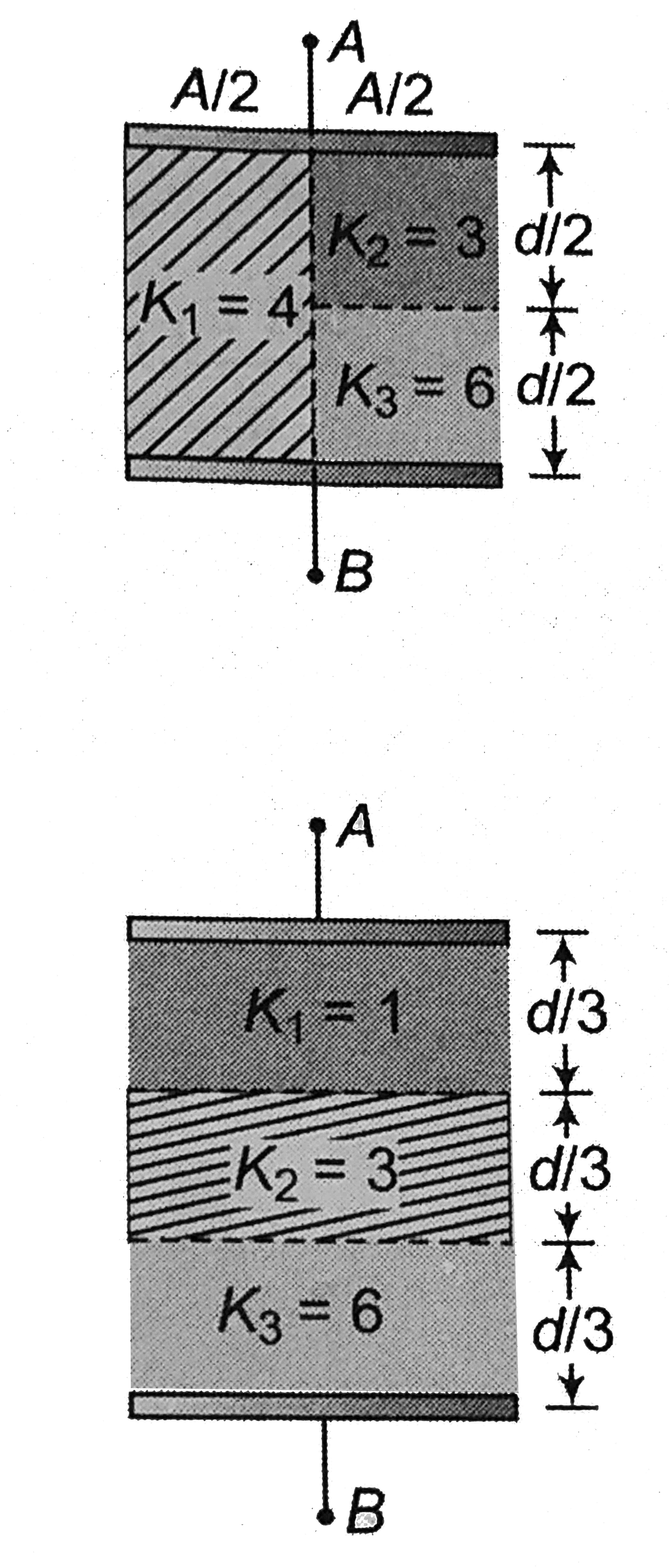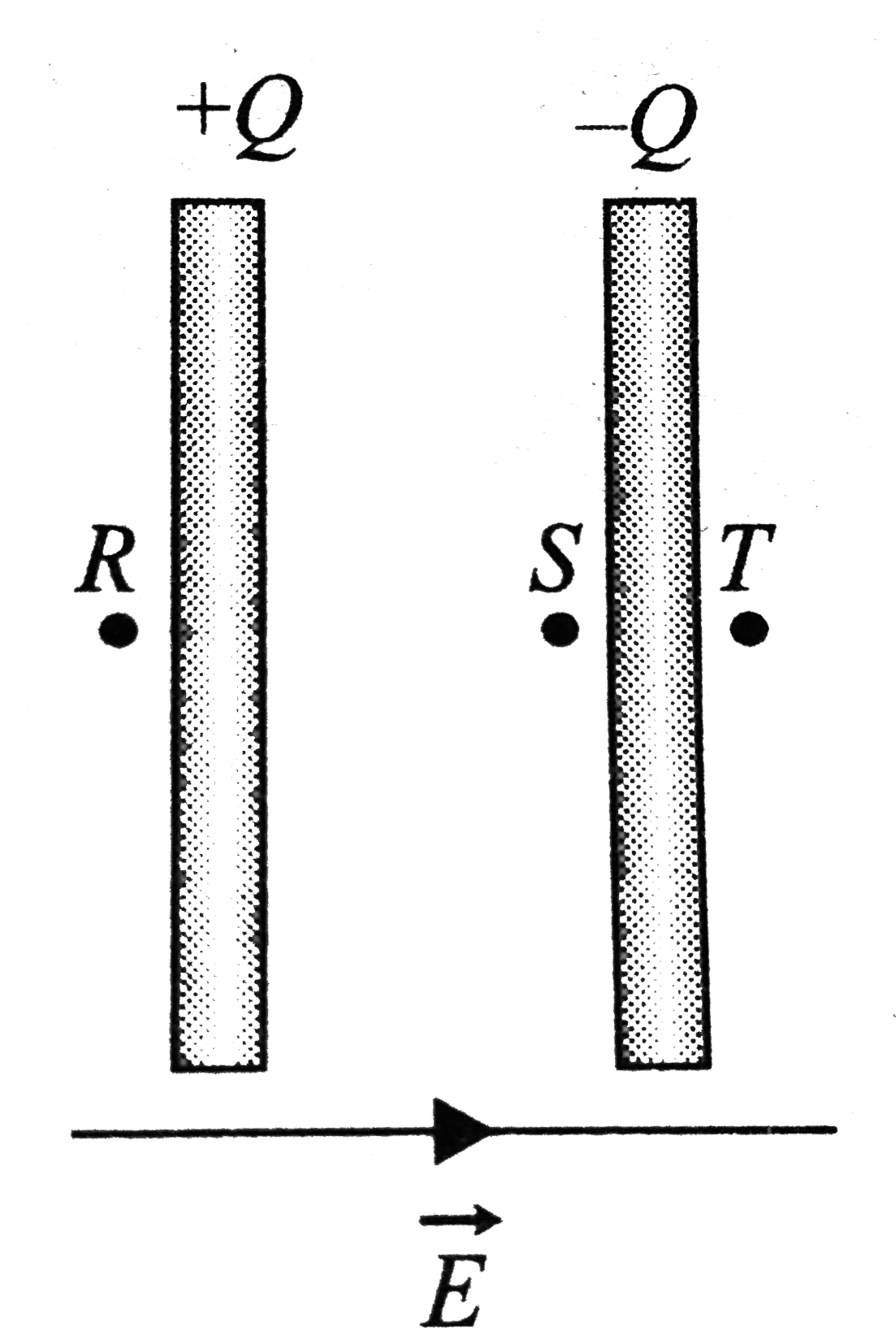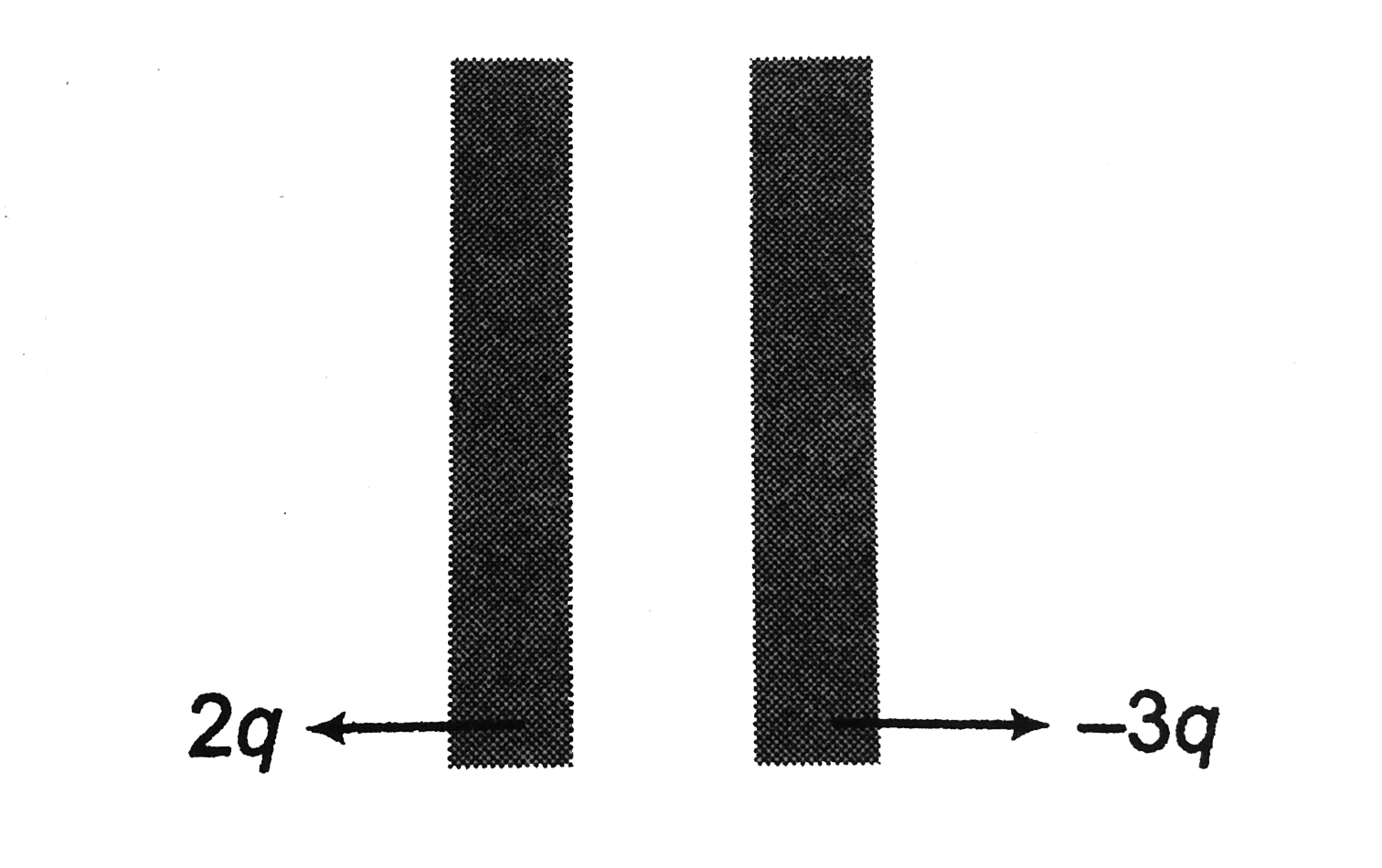Find potential difference across the plates AB if capacitance between the plates is C and area of each plate is equal and Q1,Q2(<Q1) are charges given to the plates
Q1C
Q2C
Q1−Q22C
Q1+Q22C
The correct Answer is:C
Step by step video & image solution for Find potential difference across the plates AB if capacitance between the plates is C and area of each plate is equal and Q_(1), Q_(2) (lt Q_1) are charges given to the plates by Physics experts to help you in doubts & scoring excellent marks in Class 12 exams.
Updated on:21/07/2023Similar Questions
The equivalent capacitance between P and Q in the figure is (area of each plate is A and separation between two consecutive plates is d)

View SolutionFind the equivalent capacitance between A and B.A: area of each plate, d: separation between the plates.

View SolutionTwo large thin conducting plates with a small gap in between are placed in a uniform electric field E (perpendicular to the plates.)The area of each plate is A, and charges +Qand−Q are given to these plates as shown in figure. If R,S, and T are three points in space, then the

View SolutionThe plates of a parallel-plate capacitor in vacuum are 5.00mm apart and 2.00m2 in area. A potential difference of 10,000V is applied across the capacitor. Compute
(a) the capacitance
(b) the charge on each plate, and
(c) the magnitude of the electric field in the space between them.
View SolutionFind the charge on each plate given area of each plate is A and separation between two consecutive plates is d.

View SolutionA parallel air capacitance 245μF has a charge of magnitude 0.48μC on each plate. The plates are 0.328mm apart.
(a) What is the potential difference between the plates?
(b) What is the area of each plate?
(c) What is the surface charge density on each plate?
View SolutionCharges 2q and −3q are given to two identical metal plates of area of cross section A. the distance between the plates is d. Find the capacitance and potential difference between the plates.

View SolutionA capacitor initially given a charge Q0 is connected across a resistor R at t=0. The separation between the plates changes according to d=d0(1+t)(0≤t<1). A small bulb is connected across the plates of the capacitor which lights when potential difference across the plates of the capacitor reaches V0. Find
(a) the variation of charge with time
(b) time when the bulb will light.
View SolutionIn a parallel plate capacitor, the distance between the plates is d and potential difference across the plate is V. Energy stored per unit volume between the plates of capacitor is
View SolutionFind out equivalent capacitance between A and B. (take each plate Area = A and distance between two conjugative plates is d)

View Solution
